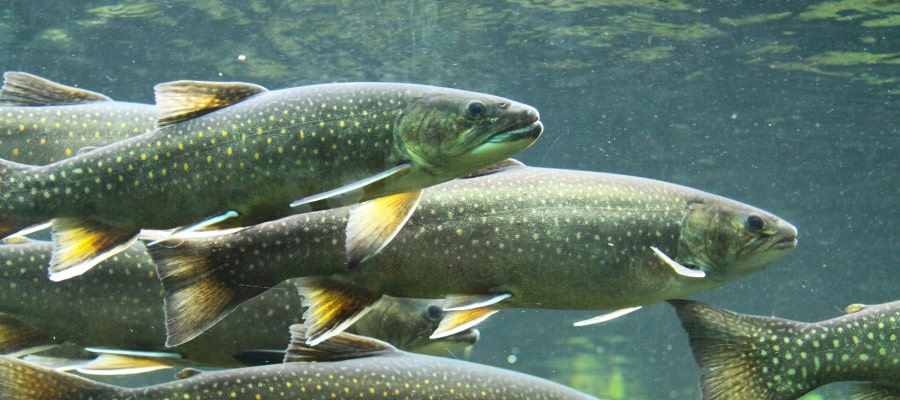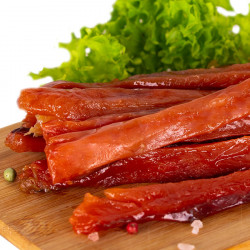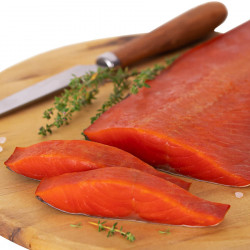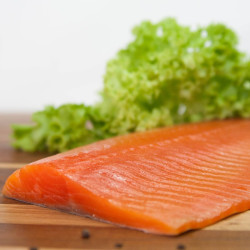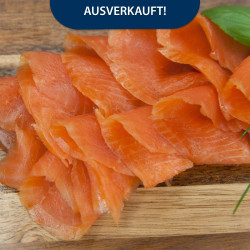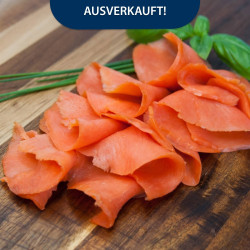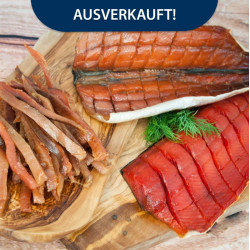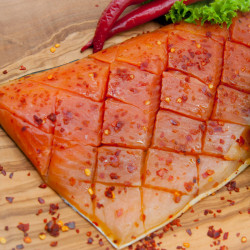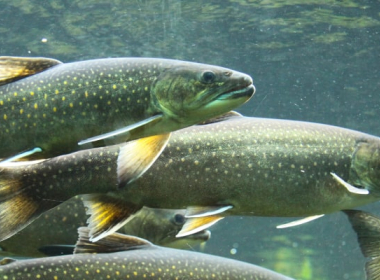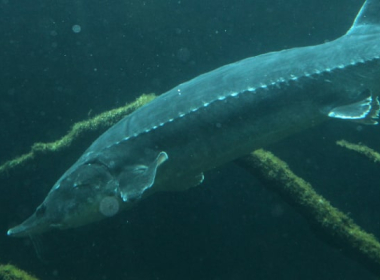Salmon trout – expert in purity and master of adaptation
The salmon trout is the most widespread representative of the large family of salmonids. It can live in both marine and freshwater environments and is classified into three genera: Atlantic, Pacific, and char, comprising a total of 18 species and subspecies. Some of the most popular include the sea trout, brook trout, marble trout, rainbow trout, golden trout, broadhead catfish, silver catfish, and the American char.
Salmon trout have adapted better than other salmonids to life in captivity and actively reproduce under controlled aquaculture conditions. Today they are the most commonly farmed fish and a significant source of affordable salmon roe.
Salmon trout: widely spread and demanding
Salmon trout are the most popular target for sport fishermen and thrive in both saltwater and freshwater - but only in clean, cool water. They can be seen as a "litmus test" for ecosystem quality, as they only survive in extremely clean water and die with even the slightest pollution.
A unique feature of the salmon trout is its ability to adapt to different living conditions and regions. Its habitat includes the Pacific and Atlantic Oceans as well as mountain rivers, deep streams and lakes in Europe and North America. They spawn exclusively in cold freshwater with strong currents or near springs that feed lakes. When spawning, the salmon trout can overcome rapids and even waterfalls up to 4 meters high.
Many species of salmon trout are now extinct or endangered, leading to strict controls on wild fishing, which is increasingly replaced by aquaculture farming.
Miniature salmon – master of camouflage
Among the various salmon species, the salmon trout is the smallest. While there used to be specimens up to one and a half meters in length, today they rarely exceed one meter and weigh no more than 20 kg. The “domestic,” or farmed, salmon trout typically reaches a length of 30 to 60 cm and weighs between 600 g and 6 kg.
Another unique trait of the salmon trout is its ability to change color depending on its environment, the season and food availability. In waters with limestone and rocky bottoms, it is lighter in color, while in muddy waters it appears darker. During the spawning season, females take on a darker hue. With an abundance of food, the fish's color becomes more uniform and consistent.
As a true member of the salmon family, the salmon trout is a voracious predator. Its prey includes small fish and insects. Domesticated salmon trout are content with worms and small pieces of meat or fish - but only if they are moving, as salmon trout do not eat anything that lies on the bottom.
Culinary perfection
Salmon trout is the most popular fish among gourmet delicacies. Its firm flesh, which can be red, pink, or white depending on its habitat and diet, is always characterized by tenderness, juiciness, a rich natural flavor and low calorie content.
Salmon trout caviar – affordable delicacy
Thanks to the large-scale farming of salmon trout under controlled conditions in aquaculture and the gentle method of roe extraction (“milking”), salmon trout caviar is the most affordable of the salmon delicacies.
Since salmon trout are the smallest salmonid, their roe is also the smallest: the grains have a diameter of 2 to 3 mm. Depending on the farming region and diet, the eggs' color ranges from dark yellow or vibrant orange to bright red. The eggs have moderate fat content and a dense, elastic shell covered with a sticky substance, giving the roe a non-crumbly texture.
Gourmets appreciate salmon trout roe for its mild, creamy taste, accompanied by slightly tangy acidic and bitter notes, and a delicate, salty aftertaste. This makes it a versatile accompaniment to many dishes.
In Germany you can buy salmon trout roe produced locally anytime from the IKRiNKA online shop, where it is available in a wide variety.
Salmon trout – treasure trove of Vitamins
In addition to its excellent taste, salmon trout has a unique biochemical composition, containing the following nutrients:
-
Vitamins A, E, B, PP, D, K, and B-group,
-
Micro- and macronutrients such as potassium, calcium, iodine, iron, magnesium, sodium, phosphorus, zinc, selenium, and manganese,
-
Omega-3 and Omega-6 fatty acids,
-
Easily digestible proteins.
This delicacy fish has an average calorie content of 120 kcal per 100 g.
Regular consumption of salmon trout supports:
-
Strengthening the cardiovascular, nervous, digestive systems, as well as muscles and bones,
-
Preventing cancer, cognitive disorders, and depression,
-
Reducing inflammation,
-
Improving vision and metabolism,
-
Boosting the immune system, increasing energy levels and physical endurance,
-
Detoxifying the body and promoting overall health and rejuvenation.
Nutritionists recommend including salmon trout in the diet of pregnant women and diabetics. It is non-allergenic and an excellent choice for children's nutrition.
Salmon trout is digested three times faster than meat, and the preparation possibilities are nearly endless: it can be baked in the oven or on the grill, fried, marinated, smoked, dried, made into soup, or turned into aspic.
Salmon trout from the IKRiNKA online shop enriches any diet and is a perfect addition to any festive table.

